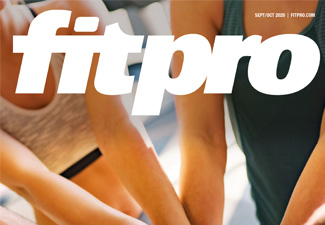Magazine References
Sep – Oct 2020

Pg 6-7. You can’t out-train a sedentary lifestyle
References
- Kirchengast S (2014), Physical inactivity from the viewpoint of evolutionary medicine, Sports, 2(2): 34-50, https://doi.org/10.3390/sports2020034
- Guthold R, Stevens GA, Riley LM, Bull FC (2018), Worldwide trends in insufficient physical activity from 2001 to 2016: a pooled analysis of 358 population-based surveys with 1·9 million participants, http://dx.doi.org/10.1016/S2214-109X(18)30357-7
- Blair SN (2009), Physical inactivity: the biggest public health problem of the 21st century, Br J Sports Med., 43(1).
- Hamilton MT, Hamilton DG, Zderic TW (2004), Exercise physiology versus inactivity physiology: an essential concept for understanding lipoprotein lipase regulation, Exerc Sport Sci Rev., 32(4): 161-166.
- Tremblay MS, Colley RC, Saunders TV, Healy GN, Owen N (2010), Physiological and health implications of a sedentary lifestyle, Physiol. Nutr. Metab., 35: 725-740.
Pg 13-15 Warming up in a strength and conditioning context, part one
References
- McGowan CJ, Pyne DB, Thompson KG, Rattray B (2015), Warm-up strategies for sport and exercise: mechanisms and applications, Sports medicine, 45(11): 1,523-46.
- Fradkin AJ, Gabbe BJ, Cameron PA (2006), Does warming up prevent injury in sport?: The evidence from randomised controlled trials, Journal of Science and Medicine in Sport, 9(3): 214-20.
- Kilduff LP, Finn CV, Baker JS, Cook CJ, West DJ (2013) Preconditioning strategies to enhance physical performance on the day of competition, International journal of sports physiology and performance, 8(6): 677-81.
- Jeffreys I (2019), The warm-up: a behavioral solution to the challenge of initiating a long-term athlete development program, Strength & Conditioning Journal, 41(2): 52-6.
- Jeffreys I (2017), RAMP warm-ups: more than simply short-term preparation, Prof Strength Cond., 44: 17-23.
- Jeffreys I (2006), Warm up revisited – the ‘ramp’ method of optimising performance preparation, UKSCA Journal, 6: 15-9.
- Verkhoshansky Y, Siff MC (2009), Supertraining, Verkhoshansky SSTM.
- Edwards DA, Kurlander LS (2010), Women’s intercollegiate volleyball and tennis: Effects of warm-up, competition, and practice on saliva levels of cortisol and testosterone, Hormones and Behavior, 58(4): 606-13.
- Silvers-Granelli HJ, Bizzini M, Arundale A, Mandelbaum BR, Snyder-Mackler L (2017), Does the FIFA 11+ injury prevention program reduce the incidence of ACL injury in male soccer players?, Clinical Orthopaedics and Related Research®, 475(10): 2,447-55.
Pg 16 – 19 Adding spice to a healthier life
References
- Jiang T (2019), Health benefits of culinary herbs and spices, J AOAC Int., 1:102(2): 395-411.
- Top dried and fresh herbs and spices for antioxidants,Eating Well, http://www.eatingwell.com/nutrition_health/nutrition_news_information/top_fresh_and_dried_herbs_and_spices_for_antioxidants, accessed on 30 June 2020.
- Fresno R (2019), Herbs and spices – biomarkers of intake based on human intervention studies – a systematic review, Genes Nutr., doi: 1186/s12263-019-0636-8
- Opara E (2014), Culinary herbs and spices: their bioactive properties, the contribution of polyphenols and the challenges in deducing their true health benefits, Int J Mol Sci., doi: 3390/ijms151019183
- Chemicals in meat cooked at high temperatures and cancer risk, National Cancer Institute website,http://www.cancer.gov/cancertopics/factsheet/risk/cooked-meats, accessed on 30 June 2020.
- Bower et al. (2016), The health benefits of selected culinary herbs and spices found in the traditional Mediterranean diet, Crit Rev Food Sci Nutr. 9(56).
- Queralt A (2014), A comprehensive study on the phenolic profile of widely used culinary herbs and spices: rosemary, thyme, oregano, cinnamon, cumin and bay, Food Chem., 1(154): 299-307.
- Perry (2018), A randomised double blind placebo controlled pilot trial of a combined extract of sage, rosemary and Melisa. Traditional herbal medicines, on the enhancement of memory in normal healthy subjects, including influence of age, Phytomedicine, 15(39): 42-48.
- Massee L (2015), The acute and sub-chronic effects of cocoa flavonols on mood, cognitive and cardiovascular health in young healthy adults. A randomized controlled trial, Front Pharmacol.,
- Yashin et al. (2017), Antioxidant activity of spices and their impact on human health: a review, Antioxidants, 6: 70.
- Mani et al. (2011), Reversal of memory deficits by Coriandrum sativum leaves in mice, Sci Food Agric., 91: 186-92.
- Sharp G (2005), Relationship of hepatocellular carcinoma to soya food consumption. A cohort-based case control study in Japan, International J of Cancer, 10:115(2): 290-5.
Pg 20-21 The evolution of outdoor training – Obstacle course racing
References
- Ayles J (2019), Spartan Race Targets Further Global Expansion and Olympic Recognition,https://www.forbes.com/sites/jamesayles/2019/12/05/spartan-race-targets-further-global-expansion-and-olympic-recognition-after-successful-2019-season-ends-with-first-ever-obstacle-course-race-held-at-twickenham/#3aebae4376a5
- Anderson J (2019), The State of Running, (RunRepeat and the IAAF), https://runrepeat.com/state-of-running
Pg 22-25 Programme design for maximal hypertrophy
References
- MacIntosh, BR. Recent developments in understanding the length dependence of contractile response of skeletal muscle. Eur. J. Appl. Physiol. 117: 1059-1071, 2017.
- Antonio, J. Nonuniform response of skeletal muscle to heavy resistance training: can bodybuilders induce regional muscle hypertrophy. Journal of Strength and Conditioning Research 14: 102-113, 2000.
- Contreras, B, Cronin, J, Schoenfeld, BJ, Nates, R, and Sonmez, GT. Are all hip extension exercises created equal? Strength Cond J 35: 17-22, 2013.
- Wulf, G. Attentional focus and motor learning: a review of 15 years. International Review of Sport and Exercise Psychology 6: 77-104, 2013.
- Marchant, DC, Greig, M, and Scott, C. Attentional focusing instructions influence force production and muscular activity during isokinetic elbow flexions. J. Strength Cond Res. 23: 2358-2366, 2009.
- Snyder, BJ, and Leech, JR. Voluntary increase in latissimus dorsi muscle activity during the lat pull-down following expert instruction. J. Strength Cond Res. 23: 2204-2209, 2009.
- Snyder, BJ, and Fry, WR. Effect of verbal instruction on muscle activity during the bench press exercise. J. Strength Cond Res. 26: 2394-2400, 2012.
- Bressel, E, Willardson, JM, Thompson, B, and Fontana, FE. Effect of instruction, surface stability, and load intensity on trunk muscle activity. J. Electromyogr. Kinesiol. 19: e500-4, 2009.
- Critchley, D. Instructing pelvic floor contraction facilitates transversus abdominis thickness increase during low-abdominal hollowing. Physiother. Res. Int. 7: 65-75, 2002.
- Karst, GM, and Willett, GM. Effects of specific exercise instructions on abdominal muscle activity during trunk curl exercises. J. Orthop. Sports Phys. Ther. 34: 4-12, 2004.
- Lewis, CL, and Sahrmann, SA. Muscle activation and movement patterns during prone hip extension exercise in women. J. Athl Train. 44: 238-248, 2009.
- Vance, J, Wulf, G, Tollner, T, McNevin, N, and Mercer, J. EMG activity as a function of the performer’s focus of attention. J. Mot. Behav. 36: 450-459, 2004.
- Wakahara, T, Miyamoto, N, Sugisaki, N, Murata, K, Kanehisa, H, Kawakami, Y, Fukunaga, T, and Yanai, T. Association between regional differences in muscle activation in one session of resistance exercise and in muscle hypertrophy after resistance training. Eur. J. Appl. Physiol. 112: 1569-1576, 2012.
- Wakahara, T, Fukutani, A, Kawakami, Y, and Yanai, T. Nonuniform muscle hypertrophy: its relation to muscle activation in training session. Med. Sci. Sports Exerc. 45: 2158-2165, 2013.
- Schoenfeld, BJ, Vigotsky, A, Contreras, B, Golden, S, Alto, A, Larson, R, Winkelman, N, and Paoli, A. Differential effects of attentional focus strategies during long-term resistance training. Eur. J. Sport. Sci. 18: 705-712, 2018.
Pg 26-28 Why use a heart rate monitor?
References
- Jakicic J et al. (2016), Effect of wearable technology combined with a lifestyle intervention on long-term weight loss: the IDEA randomized clinical trial, JAMA, 316: 1,161. 10.1001/jama.2016.12858. https://www.researchgate.net/publication/312504562_Effect_of_Wear-able_ Technology_Combined_With_a_Lifestyle_Intervention_on_Long-ter-m_ Weight_Loss_The_IDEA_Randomized_Clinical_Trial, accessed on 30 June 2020.
- Kiessling B et al. (2016), FACSM. Move more, sit less, and be well: behavioral aspects of activity trackers. Health & Fitness Journal, doi: https://www.researchgate.net/publication/309671885_Move_more_sit_- less_and_be_well
Pg 30-33 Variability – The missing variable
References
- Stergiou N, Harbourne RT, Cavanaugh JT (2006), Optimal movement variability: A new theoretical perspective for neurologic physical therapy, Journal of Neurologic Physical Therapy, 30: 120-129.
- Bauer CM, Rast FM, Ernst MJ, Meichtry A, Kool J, Rissanen SM, Suni JH, Kankaanpää M (2017),The effect of muscle fatigue and low back pain on lumbar movement variability and complexity,Journal of Electromyography and Kinesiology, 33: 94-102.
- Scholz JP, Schöner G, Latash ML (2000), Identifying the control structure of multijoint coordination during pistol shooting, Experimental Brain Research, 135(3): 382–404.
- Wagner H, Pfusterschmied J, Klous M, Serge PVD, Müller E (2012), Movement variability and skill level of various throwing techniques, Human Movement Science, 31: 78-90.
- Nakano N, Fukashiro S, Yoshioka S (2018), Variability of release parameters in basketball free throw, ISBS Proceedings Archive, 36(1): 32.
- Schöllhorn WI, Beckmann H, Davids K (2010), Exploiting system fluctuations. Differential training in physical prevention and rehabilitation programs for health and exercise, Medicina (Kaunas), 46(6): 365-373.


